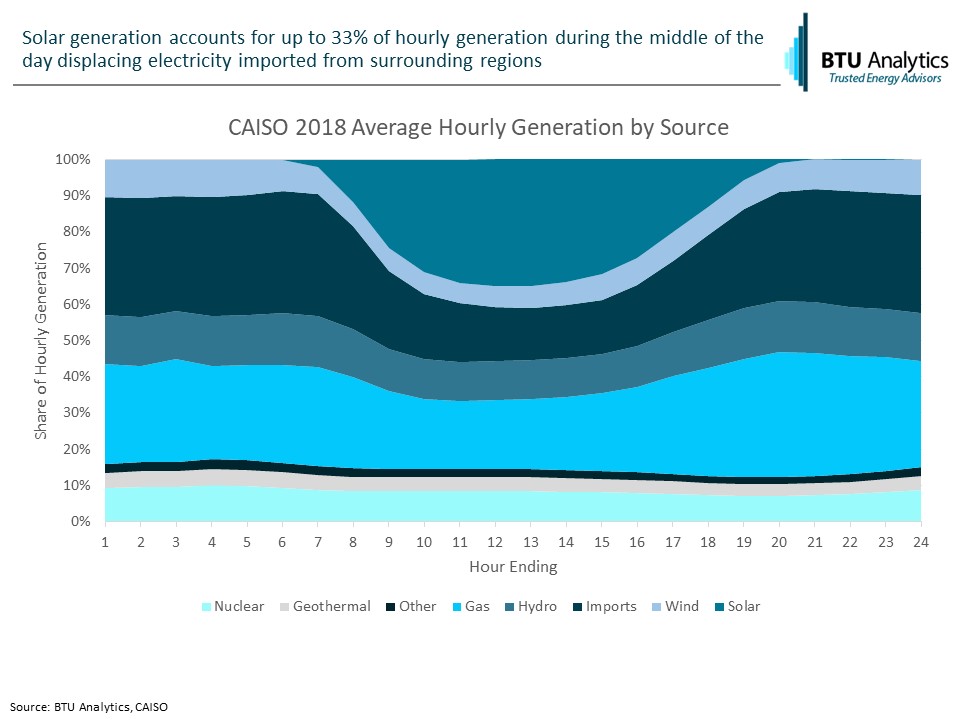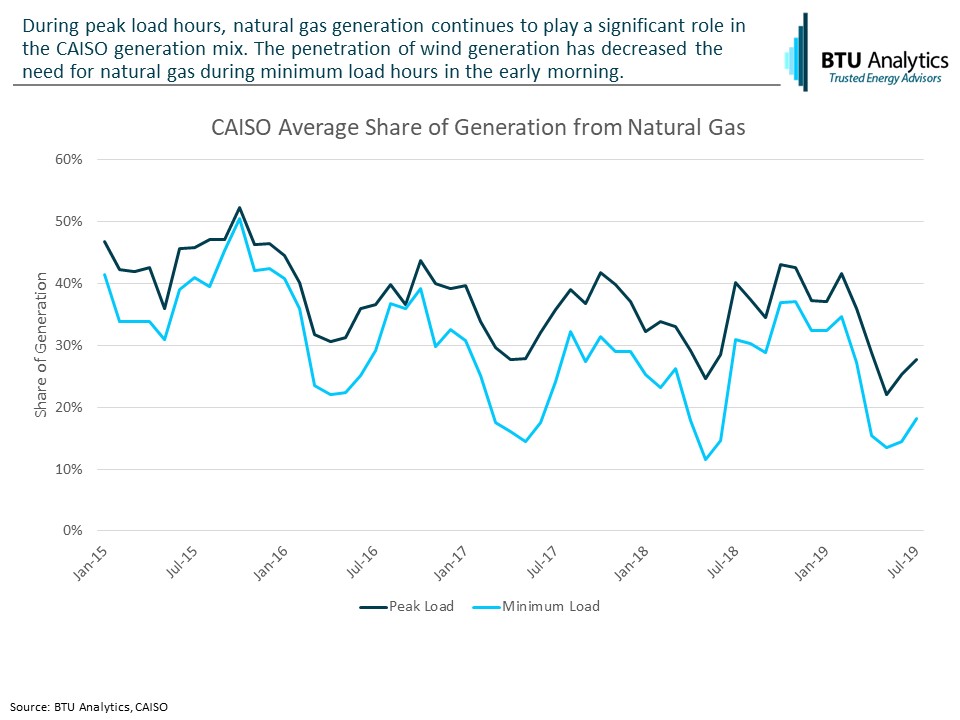Last week, Berkeley and San Francisco made headlines as the California cities announced plans to ban new natural gas hookups as they work towards the state goal of 100% carbon-free energy by 2045. The new ordinances would require new residential and municipal construction to use electricity for heating and cooking, displacing demand normally served by natural gas. While the ordinances are intended to decrease consumption of natural gas, the current state of renewable technology is unlikely to be able to handle increased electric demand especially during peak load hours. If California is counting on growing solar and wind generation to displace natural gas, well, you’re gonna need a bigger battery.
Renewable technologies have made significant progress in recent years and have become an increasingly larger part of the generation mix in California. In 2018, solar provided as much as 33% of hourly generation during the middle of the day when sunlight is most abundant. While renewables such as solar have long been touted as a replacement for fossil fuels, natural gas displacement during hours of peak solar generation has been limited. Natural gas’ share of hourly generation falls from 27% to 20% during the first half of the day, however, electricity imports from surrounding regions are hit the hardest, falling from 37% down to 15% as shown below.

While solar generation mostly occurs between 7 AM and 5 PM, peak load (the hour of the day with maximum generation) doesn’t occur until 6 PM or later. The chart below illustrates seasonal hourly generation curves compared to hours of solar generation. During the summer, solar generation drops off just as people are getting home from work and cranking up the air conditioning, and turning on their TVs. In the winter, the peak is even later in the day. Despite significant solar generation during the middle of the day, load must be met with other sources, such as natural gas, during peak load hours. Similarly, the minimum load hours (the hour of each day with the smallest generation) tend to occur early in the morning when solar is also unavailable.

Although solar penetration has become a larger share of the California generation mix, natural gas remains an important backstop especially during hours of peak load. While its share of hourly generation has declined since 2015, natural gas still provides between an average 25% and 40% of peak hourly generation depending on the time of year. During spring months when hydro power is at its peak, natural gas generation drops before rebounding for the remainder of the year, as shown below.

While natural gas generation during peak hours has remained strong, generation during minimum load hours has declined considerably. Despite solar being a non-factor early in the morning, natural gas must compete with wind generation that has made significant strides in California during the last few years. As illustrated in the chart above, in 2015, on average, natural gas accounted for 40% of minimum load hour generation. By 2018, that percentage had dropped to an average of 26% as wind generation increased to an average of 15% of minimum load generation.
California continues to push towards a zero-carbon future, and the announcements of potentially banning natural gas hookups in Berkeley and San Francisco are just another attempt to move away from natural gas. However, shifting the burden from gas to electric will only increase the need for natural gas-powered generation given the current state of renewable and battery technologies. Until battery technology can adequately shift intermittent renewable generation to meet peak load hours, natural gas will remain a significant part of the California generation mix. To keep up with the penetration of renewables and their effect on the natural gas market, request a sample of BTU Analytics’ Henry Hub Outlook.








